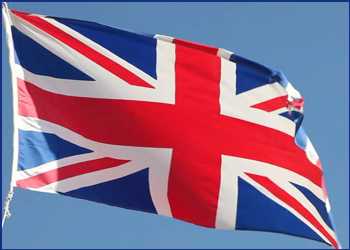
UK Jobless Rate Falls Unexpectedly
October 17, 2022The UK jobless rate eased unexpectedly to the lowest since 1974 and more people dropped out of workforce making it difficult for businesses to find employees to fill vacancies, official data showed Tuesday.
The jobless rate fell to 3.5 percent in three months to August from 3.6 percent in three months to July, the Office for National Statistics reported. This was the lowest since December to February 1974. The unemployment rate was forecast to remain unchanged at 3.6 percent.
The economic inactivity rate increased 0.6 percentage points to 21.7 percent in the June to August period. The ONS said the quarterly increase was driven by people remaining inactive because they are long-term sick or because they are students.
The employment rate was 75.5 percent, which was 0.3 percentage points lower than the previous quarter and 1.0 percentage points lower than before the pandemic.
Data showed that the estimated number of vacancies fell by 46,000 on the quarter to 1,246,000 in the July to September period. This was the largest decrease on the quarter since mid 2020.
In September, the jobless claims increased 25,500 from August, much bigger than the expected increase of 4,200. The claimant count held steady at 3.9 percent.
Payrolled employment showed another monthly increase of 69,000 to a record 29.7 million in September.
Average earnings including bonuses grew 6.0 percent from last year in the three months to August compared to the expected increase of 5.9 percent.
Excluding bonus, the regular pay rose 5.4 percent annually, faster than economists’ forecast of 5.3 percent. This was the strongest growth in regular pay, seen outside of the coronavirus pandemic period.
Nonetheless, at 9.9 percent, consumer price inflation continued to outpace the wage growth. This has dwindled household incomes.
While there were tentative signs that the labor market is cooling from the red-hot conditions seen in recent months, the shortfall in labor supply is keeping it exceptionally tight, Capital Economics economist Ruth Gregory noted. That will maintain intense pressure on the Bank of England to raise rates aggressively over the coming months.
Whether the bank opts for a 75bp or 100bp rate hike will depend on whether the government’s fiscal plan in late October succeeds in stabilizing markets, ING economist James Smith said.
The BoE has raised its interest rates over the last seven straight meetings, taking it to the highest since November 2008.
Once again, the latest data confirms that the UK is facing the tightest labor market in years, British Chambers of Commerce Head of Research David Bharier said. Labor shortages are holding back the ability of many businesses to service existing customers and grow.
While the jobless rate stands at the lowest since 1974, the increasing economic inactivity rate should be a cause for concern, with long-term sickness cited by the ONS as a key driver of this, Bharier added.
Source: Read Full Article


